Organizations and Keeping Them Organized: A Key to Success
February 13, 2025 2025-02-07 11:43
Organizations and Keeping Them Organized: A Key to Success
In today’s fast-paced world, the ability to stay organized is a crucial skill for any organization, whether it is a small business, a non-profit, or a large corporation. Proper organization not only ensures that tasks are completed efficiently but also fosters a healthy work environment that encourages collaboration, productivity, and innovation. Whether you’re managing a team or running a business, the ability to stay organized is key to achieving long-term success. This article explores the importance of organization in an organization, best practices for keeping things organized, and strategies for improving organization at all levels.
The Importance of Organization in an Organization
- Enhanced Productivity
- When an organization is well-organized, tasks are completed more efficiently. Clear systems and processes allow team members to understand their roles, manage their time effectively, and access the resources they need to succeed. A lack of organization, on the other hand, can lead to confusion, missed deadlines, and unnecessary delays.
- Improved Communication
- Organization plays a critical role in communication. When information is properly organized, it’s easier for team members to access relevant data and collaborate. Disorganization can result in confusion, misunderstandings, and even conflict, all of which can negatively impact team performance. Effective communication is vital for maintaining good relationships, fostering collaboration, and ensuring that projects run smoothly.
- Better Decision Making
- Organized companies and teams have better access to the information they need to make informed decisions. By keeping files, documents, and data properly organized, leaders and employees can quickly gather relevant insights, compare options, and make decisions based on up-to-date information. In contrast, disorganization can lead to poor decisions due to a lack of timely and accurate data.
- Stress Reduction
- When everything is in its place, and tasks are systematically planned and executed, employees are less likely to experience stress or overwhelm. An organized environment provides clarity, which helps team members stay focused and confident in their ability to complete their work. In disorganized environments, employees may feel unsure of their responsibilities, leading to higher stress levels.
- Customer Satisfaction
- For businesses, staying organized means meeting customer expectations consistently. Well-organized teams can respond to customer inquiries more promptly, resolve issues more effectively, and deliver products or services on time. A company that is disorganized may struggle with delays, lost orders, and other customer service challenges, resulting in dissatisfied customers.
Best Practices for Keeping an Organization Organized
Keeping an organization running smoothly requires an effective structure and efficient systems. Here are some best practices for maintaining organization:
- Set Clear Goals and Priorities
- Organizations should set clear, measurable goals that everyone understands and is working toward. Setting priorities helps teams focus on what matters most and allocate resources effectively. Clear goals also provide motivation and direction, reducing confusion and ensuring that everyone is aligned toward the same objective.
- Create Well-Defined Roles and Responsibilities
- One of the biggest organizational challenges is ensuring that everyone knows what is expected of them. By clearly defining roles and responsibilities, you reduce the chances of confusion and overlap in duties. When employees understand their roles and how they contribute to the overall goals of the organization, they are more productive and effective in their work.
- Develop Effective Systems and Processes
- Successful organizations rely on well-designed systems and processes. Whether it’s a project management tool, a document-sharing system, or a customer relationship management (CRM) platform, having organized systems in place helps streamline workflows and improve efficiency. These systems should be easily accessible and regularly updated to reflect changes in workflows or technology.
- Implement Time Management Strategies
- Time management is an essential component of organizational success. Encouraging employees to manage their time effectively—whether through task prioritization, scheduling, or using time-tracking tools—helps ensure that deadlines are met, and projects stay on track. Time management strategies can help employees focus on their most important tasks and avoid distractions.
- Foster a Collaborative Work Environment
- A collaborative work environment promotes organization by ensuring that everyone has access to the information and resources they need to succeed. Encourage open communication, team meetings, and the use of collaborative tools such as shared documents, messaging platforms, and task management systems. Collaboration fosters efficiency and reduces the risk of miscommunication or tasks falling through the cracks.
- Embrace Digital Tools
- In today’s digital age, using the right technology can significantly improve an organization’s level of organization. Project management tools like Trello, Asana, or Microsoft Teams help track progress and keep team members on the same page. Cloud storage platforms like Google Drive or Dropbox allow for easy document sharing and collaboration. Leveraging these tools can automate tasks, streamline communication, and keep everything organized in one place.
- Encourage Regular Cleanups
- Keeping the physical and digital workspace clean and organized is essential. Encourage team members to regularly clean up their physical workspaces by decluttering their desks, organizing files, and keeping essential documents easily accessible. Digital organization is just as important, so ensure that emails, files, and documents are properly organized into folders and regularly archived to prevent overload.
- Monitor Progress and Adjust Plans as Needed
- An organized company not only has systems in place but also regularly evaluates its progress and makes adjustments as needed. Monitoring progress through regular check-ins or performance reviews ensures that the organization stays on track. If processes are not working efficiently, make necessary adjustments to improve organization and productivity.
Common Challenges in Keeping an Organization Organized
Even with the best practices in place, organizations can face challenges when it comes to staying organized. These include:
- Resistance to Change
- Employees may be resistant to adopting new organizational systems or tools, especially if they are accustomed to old ways of doing things. Overcoming resistance to change requires clear communication about the benefits of the new system and providing adequate training and support.
- Lack of Resources
- In some cases, organizations may not have the financial or human resources to invest in advanced tools or hire additional staff to handle organization-related tasks. In these cases, prioritizing tasks and finding creative solutions can help maintain order despite limited resources.
- Overwhelming Amount of Information
- As organizations grow, they accumulate vast amounts of information. Managing this information and ensuring it remains accessible and organized can become overwhelming. Developing a system for storing, categorizing, and archiving information can prevent important details from being lost in the shuffle.
- Communication Breakdowns
- Even with effective systems in place, a lack of communication can disrupt organization. Ensuring that team members are regularly updated on project statuses, changes in roles, and new goals is crucial for maintaining organization and ensuring that tasks are completed efficiently.
The Benefits of Maintaining Organization in an Organization
Maintaining a well-organized workplace has numerous benefits for both employees and the organization as a whole:
- Increased Efficiency
- When processes are streamlined, tasks are completed more quickly, and resources are used more effectively. This leads to higher productivity and better results for the organization.
- Enhanced Employee Satisfaction
- A well-organized environment reduces stress, improves focus, and enables employees to succeed. When employees feel supported and have the tools they need to succeed, they are more likely to stay engaged, motivated, and satisfied in their work.
- Stronger Team Collaboration
- An organized workplace fosters better communication and collaboration between departments and team members. This leads to better decision-making, innovation, and problem-solving across the organization.
- Improved Customer Experience
- An organized company can respond more quickly and effectively to customer inquiries, ensuring a positive customer experience. Whether it’s handling customer service requests or fulfilling orders, organization enables faster and more reliable service.
Conclusion
Keeping an organization organized is not just about tidying up the workspace or setting up systems—it is about creating a culture of efficiency, clarity, and collaboration that drives success. When teams are organized, they work more efficiently, make better decisions, and can respond to challenges more effectively. Organization allows businesses to focus on their core objectives and maintain a high level of performance.
Incorporating the right strategies, tools, and processes can transform an organization into a well-oiled machine that achieves its goals and fosters a positive work environment. By prioritizing organization, organizations set themselves up for long-term success, growth, and sustainability.
Related Posts
Organizations and Keeping Them Organized: A Key to Success
February 13, 2025 2025-02-07 11:43Popular Tags






























